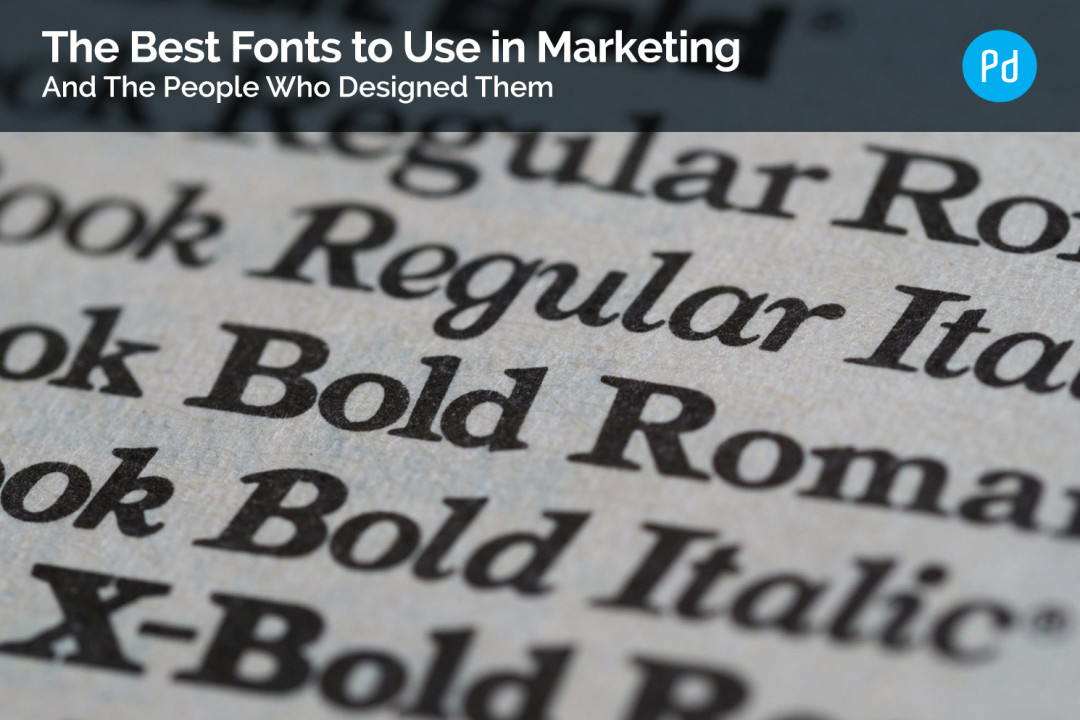Popular Fonts Used in Design
There are multiple components that come together to form an impactful, eye-catching brochure, leaflet, catalogue, or web page. While images, colours and format may be instrumental, it’s also beneficial to consider the font. There are many different fonts available, but not all are created equal when it comes to readability, engagement and influence on audiences. When putting together marketing materials, it’s crucial to utilise fonts that will maximise the chances of achieving key objectives.
Who Are The People That Designed Them?
Many people are aware of famous fonts and some are much more recognisable and well-known than others. Popular fonts for website design and printed materials, such as brochure design and catalogue design, are usually clear and easy to read and they have a reputation for creating a sense of trustworthiness, reliability and credibility. Some well-known examples of fonts and font designers include:
- Helvetica – designed by Max Miedinger and Eduard Hoffman
- Avenir – designed by Adrian Frutiger
- Arial – designed by Robin Nicholas and Patricia Saunders
- Calibri – designed by Lucas de Groot
- Times New Roman – designed by Stanley Morison
- Georgia Bold – designed by Matthew Carter
- Baskerville – designed by John Baskerville
The Best Fonts to Use in Marketing
There is a diverse range of options available to marketers and business owners working on creating brochures, catalogues, business cards and websites. The key to determining which are the best fonts to use in marketing lies in considering essential factors for each individual brief. These include:
1. Brand identity
One of the most critical considerations when choosing a font is the brand identity. You want to select a font that represents your brand and gives the audience an idea of what you’re about. A brochure for a children’s clothing or toy company, for example, should look very different to a website for a financial organisation or a law firm in terms of the font and typography. Choose a font that is relevant to your brand and use the font to start building connections and positive first impressions.
2. The target customer
Research suggests that people respond differently to fonts, and we form impressions and perceptions based on how information is presented to us. When designing sales and marketing materials, the aim is to encourage the buyer to take the next step. Think about your target customer when you browse different fonts and opt for a font that will appeal to and resonate with your ideal buyer. The actual font is important, but it’s also wise to consider the size too. If you are catering to older people or children, for example, choosing a larger font size is a great idea.
3. The objectives of the marketing campaign
When you are exploring different fonts, think about what you want to achieve. What are the primary objectives and what are you hoping will happen once your audience sees a web page or reads a brochure. What kinds of reactions are you expecting and how do you want people to view your brand? Some fonts, for example, are renowned for building trust and confidence, while others can make brands appear approachable and friendly. The font should match the message. If you are working on a web page for a bank, for example, using a font like Comic Sans could detract from the seriousness of the message and make your brand appear less reliable or professional. A test conducted by Errol Morris in the New York Times in 2012 demonstrated the influence and impact of using different fonts. Around 40,000 readers were presented with the same passage in six different fonts. People were most likely to agree with the statements when the Baskerville font was used. Levels of disagreement were highest for Comic Sans and Helvetica.
4. Feedback and testing
The best way to monitor the impact of using different fonts is to test versions, collect feedback and analyse data. One font may boost conversion rates more than others, for example. If this is the case, it pays to have access to this data and to use it to increase sales or encourage people to get in touch.
5. The content type
The type of content will have a role in determining how suitable a specific font is. It’s important to consider not only the message that is being conveyed, but also how it is being put across. If you’re including a passage of text, or the information is detailed or complex, readability is key. Opt for a clear, understated font, such as Arial, Georgia or Times New Roman, which is easy to read. It becomes more difficult to retain information and to understand and digest chunks of text if the font is decorative, for example.
Photo images from Pixels
Summary
The fonts you use for marketing materials can influence the way people react to the content, the way they view your brand and the action they take once they’ve finished browsing a landing page or flicking through a catalogue. To boost conversion rates, enhance brand identity and improve customer engagement, it pays to test different fonts, to think about the impression you want to create and to focus on connecting with your target audience.
If you’re interested in help with choosing the right fonts for your marketing materials please get in touch with us for a free consultation.




